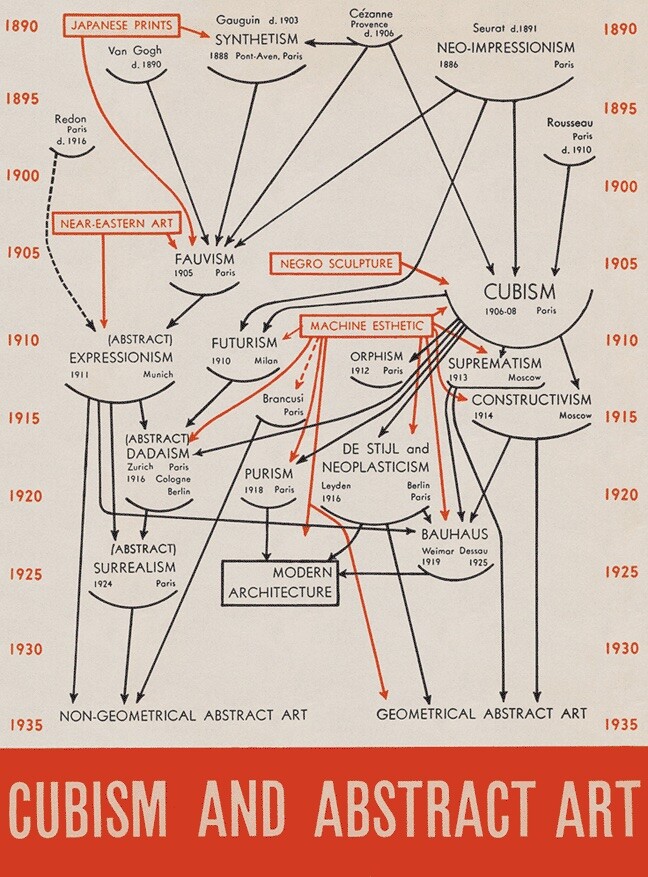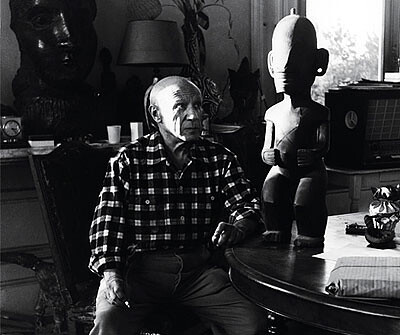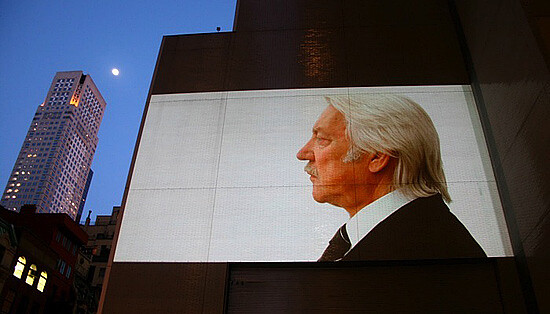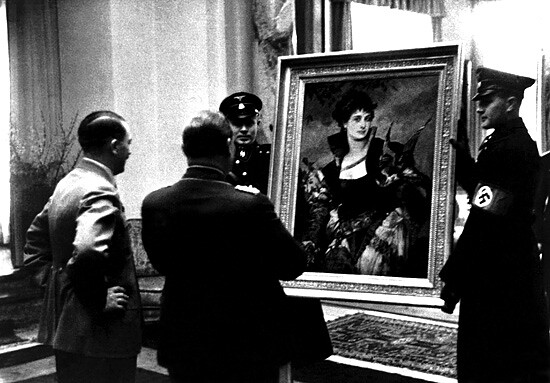On this occasion I will simply quote from several of the responses I received to a questionnaire—subsequently published in October magazine—about “contemporary art.” First, my questions:
The category of “contemporary art” is not a new one. What is new is the sense that, in its very heterogeneity, much present practice seems to float free of historical determination, conceptual definition, and critical judgment. Such paradigms as “the neo-avant-garde” and “postmodernism,” which once oriented some art and theory, have run into the sand, and, arguably, no models of much explanatory reach or intellectual force have risen in their stead. At the same time, perhaps paradoxically, “contemporary art” has become an institutional object in its own right: in the academic world there are professorships and programs, and in the museum world departments and institutions, all devoted to the subject, and most tend to treat it as apart not only from prewar practice but from most postwar practice as well.
Is this floating-free real or imagined? A merely local perception? A simple effect of the end-of-grand-narratives? If it is real, how can we specify some of its principal causes, that is, beyond general reference to “the market” and “globalization”? Or is it indeed a direct outcome of a neoliberal economy, one that, moreover, is now in crisis? What are some of its salient consequences for artists, critics, curators, and historians—for their formation and their practice alike? Are there collateral effects in other fields of art history? Are there instructive analogies to be drawn from the situation in other arts and disciplines? Finally, are there benefits to this apparent lightness of being?1
As you can see, the questions are directed at critics and curators based in North America and Western Europe; I hope they do not appear too provincial as a result. I have arranged the extracts with an eye to connections that exist between them. My purpose here is simply to suggest the state of the debate on “the contemporary” in my part of the world today.
First from Grant Kester, a historian of contemporary art, based in southern California:
The problem of “the contemporary” is rooted in a tension that emerged when Western art history was first formalized as a discipline. The generation of European historians that helped establish the discipline in the mid-nineteenth century found itself confronted by a vast range of new and unfamiliar artifacts that were circulating throughout Europe as a result of colonial expansion into Africa, Asia, and the Americas, as well as early archaeological excavations in Italy and Greece. Historians and philosophers raised the question of how contemporary viewers could transcend the differences that existed between themselves and very different cultures whose works of art they admired—cultures whose shared meanings were inaccessible to them due to distances of time or space.
Then from James Elkins, a meta-theorist of art history, based in Chicago:
From the perspectives of “world art history” and its critics today, “the contemporary” would appear to be either exempted from the discipline of art history, because of its position outside or before art histories, or exemplary of the discipline, because of its newfound universality (i.e., by definition “the contemporary” exists everywhere).
Next from Miwon Kwon, a contemporary art critic and historian based in Los Angeles:
Contemporary art history sits at a crossroads in the uneven organization of the subfields that comprise the discipline of art history. Within most university art history departments, one group of subfields covering Western developments is organized chronologically, as periods (i.e., from Ancient to Modern, with Medieval and Renaissance in between). Another group of subfields that covers non-Western developments is identified geographically, as culturally discrete units even if they encompass an entire continent (i.e., African, Chinese, Latin American, etc.) The category of contemporary art history, while institutionally situated as coming after the Modern, following the temporal axis of Western art history as the most recent period (starting in 1945 or 1960 depending on how a department divides up faculty workload or intellectual territory), is also the space in which the contemporaneity of histories from around the world must be confronted simultaneously as a disjunctive yet continuous intellectual horizon, integral to the understanding of the present (as a whole). Contemporary art history, in other words, marks both a temporal bracketing and a spatial encompassing, a site of a deep tension between very different formations of knowledge and traditions, and thus a challenging pressure point for the field of art history in general.
For instance, what is the status of contemporary Chinese art history? What is the time frame for such a history? How closely should it be linked to Chinese art, cultural, or political history? How coordinated should it be with Western art history or aesthetic discourse? Is contemporary Chinese art history a subfield of contemporary art history? Or are they comparable categories, with the presumption that the unnamed territory of contemporary art history is Western/American?


Then from Joshua Shannon, a historian of postwar art, from the mid-Atlantic area near Washington, D.C.:
In the last twenty-five years, the academic study of contemporary art has grown from a fringe of art history to the fastest-developing field in the discipline. It is not so long ago that dissertations on living artists were all but prohibited, while statistics published this year by the College Art Association confirm that job searches in contemporary art history now outnumber those in any other specialization, with almost twice as many positions in the field, for example, as in Renaissance and Baroque combined. We might wonder whether a discipline too long afraid of the present has now become besotted with it.
Next from Richard Meyer, a theorist of “the contemporary,” based in Los Angeles:
Recently, I have put to my “contemporary” students several questions that are at once straightforward and aggressive. Why are you studying art history if what you really want is to write about the current moment? Where are the archival and research materials on which you will draw—in the files of a commercial gallery, in a drawer in the artist’s studio, in the works of art themselves, in a series of interviews that you intend to conduct with the artist, in a theoretical paradigm that you plan to apply to the work, or in an ideological critique of the current moment? What distinguishes your practice as a contemporary art historian from that of an art critic? And how does the history of art matter to the works you plan to write about and to the scholarly contribution you hope to make?
Then from Pamela Lee, a scholar on postwar art, based in San Francisco:
Call it “the moving target syndrome.” At what point does a stack of press releases turn into something like a proper reception history? How do you write about a contemporary artist whose work shifts radically in mid-stream? And what does one do when the topics that seemed so pressing and so critical just a few short art-world seasons back lose that sense of urgency? There is, then, a paradoxical way we might characterize the problem: contemporary art history is premature because it is always in a perpetual state of becoming, one that alternates endlessly between novelty and critical (as well as commercial) exhaustion.
Next from Mark Godfrey, a young curator of contemporary art at Tate Modern in London:
If it is correct that no “paradigms” have emerged in the place of those such as “the neo-avant-garde” and “postmodernism,” then one should first look precisely to the success of those discourses to understand why. The critical discourse of postmodernism caused most historians and critics to distrust any overarching and monolithic model that would account for what is most compelling about contemporary art. At the same time, following the impact of postcolonial theory and a simple widening of our horizons, American and European art historians and curators have become far more attentive to contemporary art as it emerges across the world. Most acknowledge that serious art is being made in China, Latin America, South Africa, and so on, but few have the opportunities to see what is being made. With this situation, who would presume to name a new paradigm? A new name would assume a totalizing explanatory power and be akin to a hubristic, neocolonial move. One also begins to distrust the presumptions of the previous paradigms. How useful are the terms “neo-avant-garde” or “postmodernism” when we think about the art that emerged in centers away from North America and Western Europe where modernism and the avant-garde signified quite differently?


Then from Terry Smith, an Australian art historian with special expertise on the contemporary, based in Pittsburgh:
How has the current world-picture changed since the aftermath of the Second World War led to the reconstruction of an idea of Europe, since decolonization opened up Africa and Asia, with China and India emerging to superpower status but others cycling downwards, since the era of revolution versus dictatorship in South America led first to the imposition of neoliberal economic regimes and then to a continent-wide swing towards populist socialism? As the system built on First-, Second-, Third-, and Fourth-world divisions imploded, what new arrangements of power came into being? Now that the post-1989 juggernaut of one hyperpower, unchecked neoliberalism, historical self-realization, and the global distribution of ever-expanding production and consumption tips over the precipice, what lies in the abyss it has created? Above all, how do we, in these circumstances, connect the dots between world-picturing and place-making, the two essential parameters of our being?
Next from Alex Alberro, a Canadian historian of postwar art, based in New York:
The contemporary is witnessing the emergence of a new technological imaginary following upon the unexpected and unregulated global expansion of the new communication and information technologies of the Internet. For one thing, technological art objects have increasingly come to replace tangible ones in art galleries and museums, which have seen an upsurge in high-tech hybrids of all kinds, from digital photography, to film and video installations, to computer and other new-media art. The “white cube” has begun to be replaced by the “black box,” and the small-screen film or video monitor by the large-scale wall projection. For another thing, the image has come to replace the object as the central concern of artistic production and analysis. In the academy, the rise of visual studies in this period is symptomatic of the new preeminence of the image. Furthermore, the imaginary of this shift from analog to digital has had a number of unpredictable effects. One of the most striking of these is the proliferation of artworks that employ fiction and animation to narrate facts, as if to say that today the real must be fictionalized in order to be thought, that the real is so mind-boggling that it is easier to comprehend by analogy.


Then from Tim Griffin, editor-in-chief of Artforum, based in New York:
The potential irony of contemporary art is that by signaling its stand apart, this art actually articulates itself as another niche within the broader cultural context—as just one more interest among so many others. Such a development is paradoxical in its implications. It becomes increasingly important for art to assert its own distinctiveness in order to exist—often by reinscribing itself within its various histories, projecting previous eras’ interpretive models onto present circumstances—at the same time that such an assertion makes art resemble current mass culture all the more.
Next from Yates McKee, a young activist/critic based in the Midwest:
The multiple institutionalizations of contemporary art entail new modes of affiliation, possibility, and complicity for artistic and critical activity. Without disavowing the urgency of macro-systemic analysis, assessing these entanglements is a matter of close, site-specific reading rather than blanket celebration or denunciation. This means refusing to reduce contemporary art to a flavor-of-the-month novelty either as peddled by art-market boosters, on the one hand, or as preemptively dismissed by guardians of art-historical authority on the basis of melancholic—and often hypocritically self-exculpating—narratives of “the cultural logic of late capitalism,” on the other. Following the example of curator and critic Okwui Enwezor, the increasingly transnational scope of contemporary art in discursive, institutional, and economic terms needs to be recognized as a productive intellectual challenge to entrenched artistic, critical, and historical traditions, requiring the latter two to engage artistic practice in light of the ongoing contradictions of what Enwezor has called the “postcolonial constellation.”
Then from T. J. Demos, a historian of contemporary art, based in London:
One risk is to fall victim to the ultimately patronizing multicultural “respect” for difference that disavows any criticality whatsoever. The latter potentially disguises a neocolonial relation to the Other, as Slavoj Žižek argues, for whom multiculturalism may disclose “a disavowed, inverted, self-referential form of racism, a ‘racism with a distance’—it ‘respects’ the Other’s identity, conceiving the Other as a self-enclosed ‘authentic’ community towards which he, the multiculturalist, maintains a distance rendered possible by his privileged universal position.”2


Next from Kelly Baum, a young curator of contemporary art at my home institution, Princeton University:
What if art’s heterogeneity signals possibility instead of dysfunction? What if heterogeneity is art’s pursuit instead of its affliction? What if, in its very heterogeneity, art were to productively engage current socio-political conditions—conditions that are reducible to neither neo-liberalism nor globalization?
I think what we are seeing today is art miming its context. I think we are witnessing art performing “agonism,” “disaggregation,” and “particularization.” Heterogeneity isn’t just contemporary art’s condition, in other words; it is its subject as well.
Finally from Rachel Haidu, a young historian of postwar art, based in upstate New York:
Why—other than for the narcissistic pleasures related to knowing—do we want a relationship to history? Your questions frame the relevance of history to our critical relationships to art, but what about those desires, fantasies, and displacements of which criticism is made? Certainly they are wedged into our criticism of art’s relation to history. When art forces us to examine them in specific and productive ways, we are lucky: otherwise, what is the point of asking art (let alone the institutionalization of art) to find historical complexity or weight? For the sake of weight alone? To reassure us of our relations to a history without which we would feel … guilty? Irrelevant?
Hal Foster for the Editors, “Questionnaire on ‘The Contemporary,’” October 130 (Fall 2009): 3.
Slavoj Žižek, “Multiculturalism, Or, the Cultural Logic of Multinational Capitalism,” New Left Review 225 (Sept/Oct 1997): 44.

